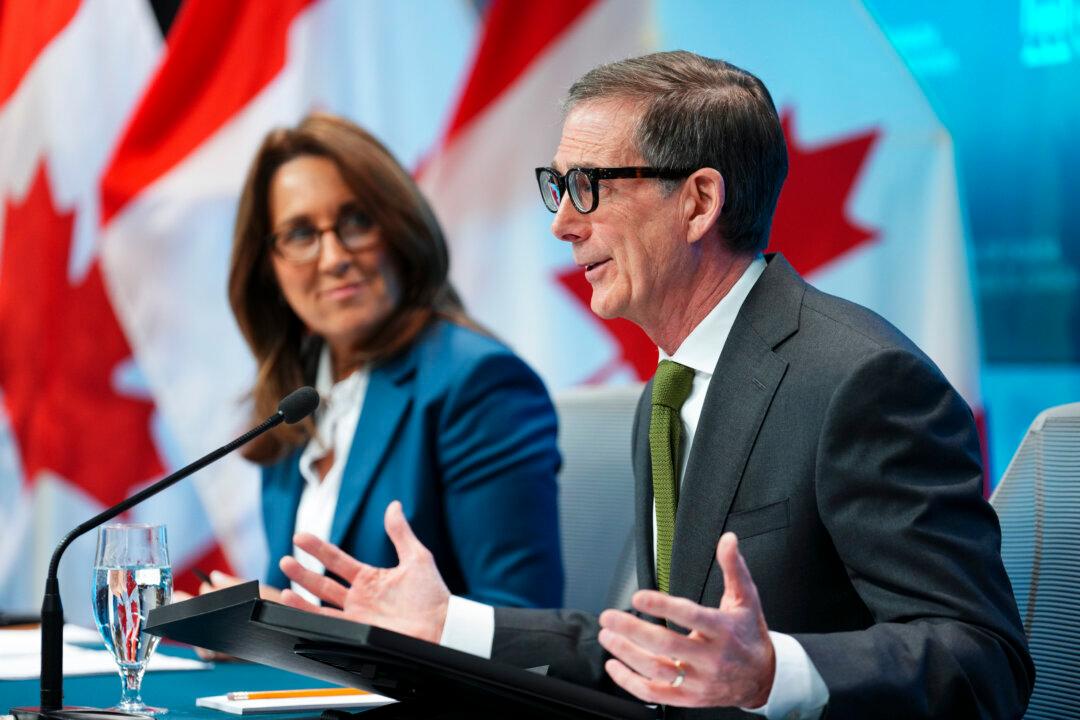The governments of Ontario and Alberta have taken some heat for cutbacks in their latest budgets. But both realize that fiscal restraint is long overdue given rising interest expenses that impinge on program spending and leave future generations with higher taxes.
Where they differ is in their strategies.
“Alberta is taking a much more active approach to deficit reduction than Ontario is,” said Ben Eisen, senior fellow at the Fraser Institute.
Alberta Premier Jason Kenney, in his first provincial budget delivered on Oct. 24, promised to balance the budget in four years. By 2022–23, however, Ontario is still projected to be in the red by 0.4 percent, according to an RBC Economics report published Nov. 19.
Provincial Comparison
Compared with Ontario, Alberta has tougher sledding ahead to balance the books, as its economy has not fully recovered from the crash in oil prices that began in late 2014.
Trevor Tombe, associate professor of economics at the University of Calgary, says the choices made in Alberta’s 2019 budget will lead to less borrowing and an estimated reduction in interest payments of about $800 million in 2022.
Until Kenney’s budget, “we haven’t seen a path to balance put out by a government in Alberta since early 2015,” Tombe said.
Alberta’s budget proposes to cut spending by 2.8 percent over four years, which amounts to $1.3 billion below 2018–19 levels. In the 1990s, Albertans saw cuts of nearly 20 percent.
“In my view, Budget 2019 is a clear and credible path to balance,” Tombe wrote about Alberta’s budget under Kenney’s leadership in an Oct. 28 op-ed for CBC.
In contrast, Eisen suggests that Ontario take a page out of Quebec’s book to get its financial house in order. He says Quebec has always carried more debt than Ontario relative to the size of its economy, but that all changed in the aftermath of the great recession that hit in 2009.
“As stronger revenue came in … they didn’t commensurately increase spending,” Eisen said about Quebec’s tack. “They continued to exercise spending restraint through that period.”
In a Nov. 13 op-ed, Eisen lauded the speed of Quebec’s approach to eliminating the deficit and said that in comparison, “Ontario’s debt management is especially unambitious.”
In 2019–20, Ontario projects a debt-to-GDP ratio of 40.0 percent, according to the province’s fall fiscal update released Nov. 6. But very little progress is expected in reducing this ratio over the outlook period, through to 2021–22.
Quebec’s debt-to-GDP ratio peaked at 50.9 percent in 2012–13, but the province balanced its books in 2015–16 and its debt-to-GDP ratio is projected to fall from 38.8 percent this year to 34.8 percent in 2023–24, according to a Fraser Institute report published Nov. 13.
The last time Ontario had a balanced budget was before the financial crisis of 2008. Annual deficits have since added $107.3 billion to the debt, which stands at $353.7 billion—the most of any sub-national government in the world, according to Moody’s.
Ontario is spending roughly $13 billion a year in interest payments.





